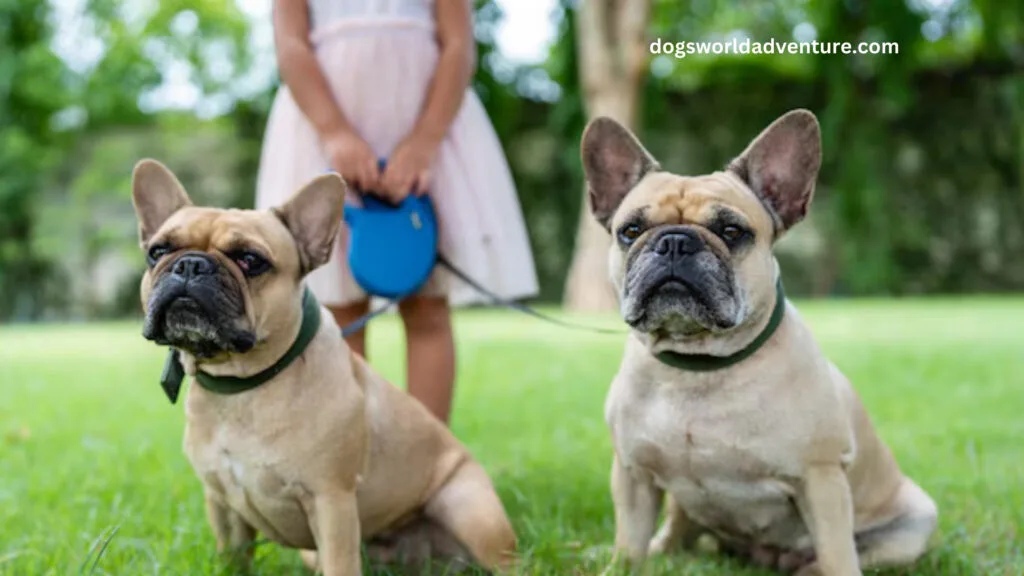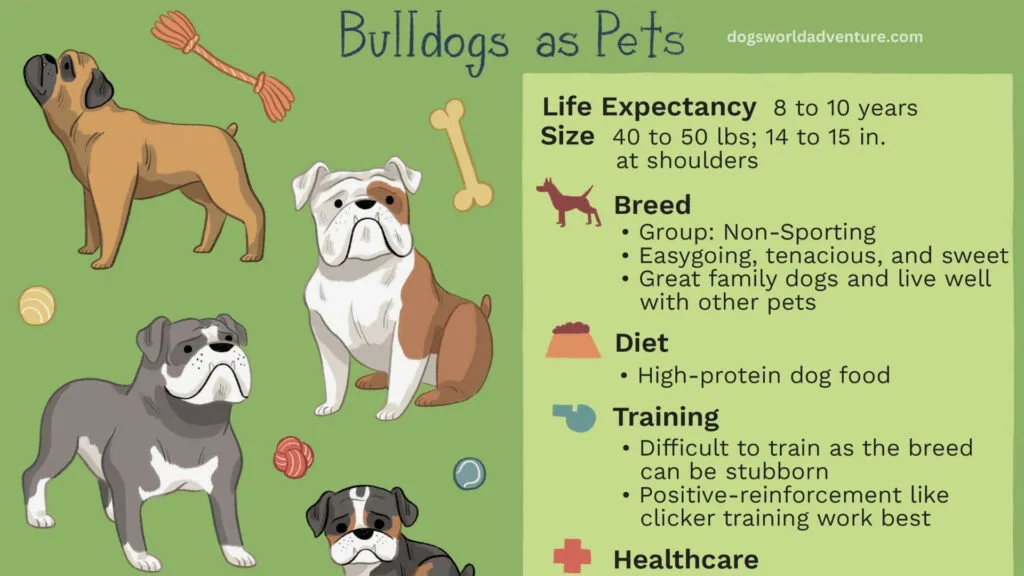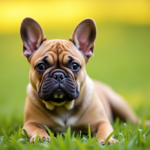The Bulldog is a popular and easily recognized dog breed known for its wrinkled face, muscular body, and friendly nature. Originally bred in England for bull-baiting, Bulldogs have evolved into loving family pets that are calm, loyal, and great with children. Even though they may look tough, Bulldogs are gentle dogs that enjoy cuddling and being around their family. They are low-energy dogs, so they don’t need a lot of exercise, but they still require some daily activity to stay healthy. However, Bulldogs do need extra care for their breathing and skin folds to avoid health issues.
Bulldogs are a good fit for families, whether you live in a house or an apartment, as they don’t need a lot of space. They get along well with other pets and are friendly with strangers, though they can be protective of their loved ones. Despite their stubbornness, Bulldogs can be trained with patience and positive reinforcement. While Bulldogs can face some health challenges, including breathing problems and hip issues, regular vet visits and proper care can help them live happy, healthy lives.
Quick Facts
- Origin: England, originally bred for bull-baiting
- Temperament: Loyal, calm, friendly, and protective
- Weight: Males: 40-50 lbs; Females: 30-40 lbs
- Height: 12-15 inches tall at the shoulder
- Lifespan: 8-10 years
- Exercise Needs: Low to moderate, daily short walks
- Coat: Short, smooth, and easy to groom; colors include white, fawn, brindle, and more
- Health Concerns: Prone to breathing issues (due to flat face), hip dysplasia, skin infections, and obesity
- Good with Kids and Pets: Yes, Bulldogs are gentle and tolerant, making them great family dogs
- Living Space: Suitable for apartments and houses; sensitive to extreme temperatures
The History of the Bulldog
The Bulldog’s history dates back hundreds of years, and it began as a very different dog than what we see today. The breed was originally developed in England for a brutal sport called “bull-baiting.” In this practice, Bulldogs were used to grab onto the nose of a bull and hold on, showcasing their strength and courage. Because of this, early Bulldogs were bred to be tough, fearless, and powerful. They needed to be strong enough to withstand attacks from a bull while maintaining a firm grip.
In 1835, bull-baiting was banned in England, and the need for such aggressive traits in Bulldogs disappeared. Over time, breeders began to shift the focus away from aggression and toward a more docile and friendly temperament. The Bulldog we know today is a far cry from its bull-baiting ancestors. Instead of being used for fighting, Bulldogs have become beloved pets, known for their gentle and affectionate nature.
Appearance of the Bulldog
The Bulldog’s unique appearance makes it instantly recognizable. With a stocky body, wide shoulders, and short legs, the Bulldog has a powerful and sturdy build. The breed is known for its large, square-shaped head, with a flat, wrinkled face and short, pushed-in nose. These facial wrinkles give the Bulldog its signature look, but they also require special care.
Bulldogs typically weigh between 40-50 pounds for males and 30-40 pounds for females. Despite their muscular build, Bulldogs aren’t very tall, usually standing around 12-15 inches at the shoulder.

Bulldogs have a short, smooth coat that comes in various colors, including white, fawn, red, brindle, and piebald. Their coat is easy to care for, but their skin folds, especially around the face, need regular cleaning to prevent infections.
Bulldog Temperament
Although the Bulldog may look tough, it is known for its calm and affectionate temperament. Bulldogs are incredibly loyal to their families and are great with children, making them ideal pets for families. They form strong bonds with their owners and enjoy being around people. Bulldogs are often described as “lap dogs” in spite of their size because they love to cuddle and be close to their humans.
One of the defining traits of the Bulldog is its patience. Bulldogs are known for their laid-back nature and tolerance, making them good companions for young children who may be a bit too energetic. They are also friendly with strangers, although they can be protective of their family when needed.
While Bulldogs are generally easygoing, they can also be stubborn. Training a Bulldog requires patience and consistency, as they may resist learning new commands or following instructions. Positive reinforcement, like treats and praise, works best when training a Bulldog.
Common Health Problems in Bulldogs
Bulldogs are lovable and unique, but they do come with some health challenges. Due to their distinct appearance, Bulldogs are prone to several specific health issues. Here are some common problems you should be aware of if you’re considering owning a Bulldog:
1. Brachycephalic Syndrome
Bulldogs have flat faces, which makes them brachycephalic. This can cause breathing problems because their airways are smaller and more restricted. Bulldogs often snore, wheeze, and have trouble breathing, especially in hot weather or after exercise. It’s important to keep them cool and avoid over-exertion.
2. Hip Dysplasia
Bulldogs are prone to hip dysplasia, a condition where the hip joint doesn’t fit properly into the hip socket. This can cause pain and lead to arthritis over time. While there is no cure, maintaining a healthy weight and providing joint supplements can help manage the condition.
3. Skin Infections and Wrinkle Care
The adorable wrinkles on a Bulldog’s face need special attention. Moisture and dirt can get trapped between the folds, leading to skin infections like dermatitis. Regularly cleaning and drying the wrinkles is necessary to keep the skin healthy and avoid painful infections.
4. Cherry Eye
Bulldogs are prone to a condition called “cherry eye,” where the tear gland in the dog’s eye becomes swollen and protrudes. It looks like a red bump in the corner of the eye. While it’s not life-threatening, it can be uncomfortable and often requires surgery to fix.
5. Obesity
Bulldogs love to eat, and they can quickly become overweight if not monitored. Obesity can lead to other health problems like heart disease, breathing difficulties, and joint pain. Make sure to feed your Bulldog a balanced diet and give them proper exercise to avoid weight gain.
6. Heat Sensitivity
Due to their flat faces and tendency to overheat, Bulldogs are very sensitive to high temperatures. They can easily suffer from heatstroke, so it’s important to keep them indoors during hot weather, provide plenty of water, and make sure they don’t overexert themselves.
7. Joint and Spine Problems
Bulldogs’ stocky build and short legs can lead to joint and spine problems as they age. Conditions like arthritis or intervertebral disc disease (IVDD) can affect their mobility. Regular check-ups, maintaining a healthy weight, and gentle exercise can help keep these issues in check.
8. Allergies
Bulldogs are prone to both food and environmental allergies. Common symptoms include itchy skin, ear infections, and gastrointestinal problems. If your Bulldog shows signs of allergies, a vet can help determine the cause and recommend a suitable treatment plan or dietary changes.
By understanding and managing these common health problems, you can help your Bulldog live a healthier and more comfortable life. Regular vet check-ups, a balanced diet, and attentive care are key to keeping your Bulldog happy and healthy.
Bulldog Exercise Needs
Despite their stocky and muscular build, Bulldogs are not high-energy dogs. In fact, they are known for being somewhat lazy. However, regular exercise is still important to keep them healthy and prevent obesity. Bulldogs don’t need long runs or intense workouts, but they do benefit from short, daily walks and some playtime.
Because of their breathing issues, it’s important not to overexert your Bulldog. Short walks around the neighborhood or some playtime in the backyard are enough to keep them fit. Avoid taking your Bulldog out for walks during the hottest part of the day, as they can overheat easily due to their flat faces. Always make sure they have access to water and shade when outside.
Bulldogs also enjoy playing indoors, and games like tug-of-war or fetch can be a fun way to get them moving without too much exertion. Keep their play sessions short and monitor their breathing to ensure they don’t overdo it.
Grooming and Care for a Bulldog
One of the benefits of owning a Bulldog is that they are relatively low-maintenance when it comes to grooming. Their short coat doesn’t require much brushing, but it’s a good idea to give them a quick brush once a week to remove loose fur and keep their coat looking shiny.
The most important part of grooming a Bulldog is taking care of their skin folds. These wrinkles need to be cleaned regularly to prevent infections. Use a damp cloth to wipe between the folds, then dry the area thoroughly. It’s also important to clean their ears and keep their nails trimmed to prevent any discomfort.
Bulldogs are prone to dental problems, so regular brushing of their teeth is important. Using a dog-safe toothpaste, aim to brush their teeth a few times a week to prevent plaque buildup and gum disease.
Bulldogs as Family Pets
Bulldogs make excellent family pets due to their gentle and patient nature. They are great with children and are generally tolerant of the noise and activity that comes with a busy household. Bulldogs are affectionate and form strong bonds with their family members, often following their owners around the house or curling up next to them on the couch.

While Bulldogs are social dogs that enjoy spending time with people, they can also be content to be left alone for short periods. This makes them a good option for families who may have to leave the house for work or school during the day. However, Bulldogs don’t do well if left alone for long periods, as they can become bored or anxious.
Bulldogs and Other Pets
Bulldogs are generally friendly with other pets, especially if they are raised together. They tend to get along well with other dogs, although some Bulldogs may be a bit territorial or dominant, particularly with other males. Early socialization and proper training can help prevent any issues with aggression toward other pets.
Bulldogs can also live peacefully with cats, as long as they are introduced properly. Bulldogs are not known for having a high prey drive, so they are less likely to chase cats or other small animals. However, it’s always a good idea to supervise interactions between your Bulldog and other pets until you’re sure they get along.
Bulldogs and Living Space
Bulldogs are adaptable dogs and can live comfortably in a variety of environments, from apartments to houses with large yards. They don’t need a lot of space to run around, as they are not high-energy dogs. As long as they get their daily exercise, Bulldogs are content to spend most of their time indoors lounging around.
Because of their short noses, Bulldogs are sensitive to extreme temperatures, especially heat. It’s important to keep your home cool during the warmer months and provide your Bulldog with a comfortable, shaded area to rest. In colder weather, Bulldogs may need a little extra warmth, as their short coat doesn’t provide much insulation.
Training a Bulldog
Training a Bulldog can be a bit of a challenge, as they are known for their stubbornness. However, with patience and consistency, Bulldogs can learn basic commands and good behavior. The key to training a Bulldog is positive reinforcement. Bulldogs respond best to rewards like treats and praise, rather than harsh corrections or punishments.
Start training your Bulldog early to establish good habits. Basic commands like “sit,” “stay,” and “come” are important for keeping your Bulldog safe and well-behaved. Socialization is also crucial, as it helps your Bulldog get used to different people, animals, and environments.

While Bulldogs may take a bit longer to train compared to other breeds, they are intelligent dogs that can learn with the right approach. Keep training sessions short and fun to hold their attention.
The Bulldog’s Personality
The Bulldog’s personality is one of its most endearing traits. Bulldogs are known for being affectionate, loyal, and often comical. They have a laid-back, easygoing nature, and they love to be around their family. Bulldogs enjoy being the center of attention and often entertain their owners with their playful antics.
While they are generally calm and patient, Bulldogs also have a stubborn streak. They can be strong-willed and may resist doing things they don’t want to do, such as going for a walk when they’d rather nap. However, their stubbornness is usually balanced by their affectionate and loving nature.
Bulldogs are also known for their courage and protectiveness. While they are not aggressive dogs, they will defend their family if they sense a threat. Bulldogs make excellent watchdogs, as they are alert and will bark if someone comes near the house. However, once they know someone is not a threat, Bulldogs are typically friendly and welcoming. They are not overly aggressive toward strangers, but their strong, protective instincts make them excellent companions for families seeking a loyal and watchful pet.
Bulldogs are also known for their sense of humor. They have funny, endearing behaviors that can bring a lot of joy to their owners. Whether it’s the way they waddle when they walk, their playful grunts, or their stubborn refusal to do something they don’t want to, Bulldogs often make people smile.
Bulldog Nutrition
Feeding your Bulldog a proper, balanced diet is key to keeping them healthy. Bulldogs are prone to weight gain, so it’s important to feed them a high-quality dog food that is rich in protein but doesn’t contain excessive fat. Most Bulldogs thrive on a diet that includes lean meats, vegetables, and whole grains.
It’s important to monitor portion sizes to prevent overeating. Bulldogs tend to love food and will eat as much as they’re given, which can lead to obesity. Following feeding guidelines based on your Bulldog’s weight and age is crucial to avoid overfeeding. Treats should be given sparingly and should be low-calorie, as too many treats can also contribute to weight gain.
Additionally, make sure your Bulldog always has access to fresh water, as they can become dehydrated, especially after exercise.
Bulldog Life Expectancy and Aging
The Bulldog has a shorter lifespan than some other breeds, typically living between 8 to 10 years. While this can vary depending on genetics, diet, and overall care, it’s important to be aware of the health challenges Bulldogs face as they age.
As Bulldogs get older, they may develop mobility issues, especially if they suffer from conditions like hip dysplasia or arthritis. Regular veterinary check-ups are essential to catch any health issues early and manage them with medication or lifestyle adjustments. Maintaining a healthy weight is also crucial as it reduces the strain on their joints and helps keep them comfortable in their golden years.

Some Bulldogs may require special accommodations as they age, such as softer bedding or ramps to help them get around the house more easily.
Common Myths About Bulldogs
There are many misconceptions about Bulldogs, so let’s take a look at some common myths and the truth behind them:
- Myth: Bulldogs are mean or aggressive.
Truth: Bulldogs are typically gentle and affectionate dogs. They may look tough, but they are known for their loving and friendly nature. - Myth: Bulldogs can’t be trained.
Truth: While Bulldogs are stubborn, they can definitely be trained with patience and positive reinforcement. They may not learn as quickly as some other breeds, but they are intelligent and capable. - Myth: Bulldogs can’t live in hot climates.
Truth: While Bulldogs are sensitive to heat, they can live in warmer areas as long as their environment is controlled. Keeping your home cool and limiting outdoor activity during the hottest parts of the day will help your Bulldog stay comfortable. - Myth: Bulldogs don’t need exercise.
Truth: Bulldogs may be less active than other breeds, but they still need regular exercise to stay healthy. Short walks and gentle play are perfect for them. - Myth: Bulldogs are high-maintenance.
Truth: While Bulldogs do need their wrinkles cleaned regularly, they are otherwise low-maintenance dogs. Their short coat requires minimal grooming, and they don’t need excessive exercise.
Bulldogs in Popular Culture
The Bulldog has become an iconic figure in popular culture, often representing toughness, determination, and loyalty. Many schools, sports teams, and even military units have adopted the Bulldog as their mascot. The breed’s strong, resilient image makes it a popular choice for these symbols of strength.
Perhaps one of the most famous Bulldogs in popular culture is “Uga,” the live mascot for the University of Georgia football team. This Bulldog attends games and events, becoming a beloved figure among fans. Bulldogs also frequently appear in movies, television shows, and advertising campaigns due to their distinctive appearance and charming personalities.
Bulldog Rescues and Adoption
If you’re considering bringing a Bulldog into your home, adopting from a rescue or shelter is a great option. Many Bulldogs end up in rescue organizations due to owners being unable to care for them or because of medical issues. These dogs are often in need of a loving home and can make wonderful pets.
Bulldog rescues specialize in helping the breed and can provide valuable information on the health and care of the dog you’re adopting. They often have Bulldogs of all ages, including puppies and seniors, looking for homes. Adopting a Bulldog from a rescue not only saves a life but also gives you the opportunity to provide a loving home to a dog in need.
If you choose to adopt from a breeder, it’s important to find a reputable breeder who prioritizes the health and well-being of the dogs. Avoid puppy mills or breeders who focus solely on making a profit. Responsible breeders should provide health clearances for the parents and be open to answering any questions you may have about the breed.
Preparing for Life with a Bulldog
Bringing a Bulldog into your home requires some preparation. Bulldogs have specific needs that are different from other breeds, so it’s important to make sure your home is ready for them. Here are some things to consider before adopting a Bulldog:
- Create a comfortable living space: Bulldogs don’t need a lot of room, but they do need a cool, comfortable place to relax. Make sure your home has a space for your Bulldog to rest, away from extreme temperatures.
- Invest in wrinkle care products: Since Bulldogs are prone to skin infections, you’ll need to clean their wrinkles regularly. Stock up on wipes or gentle cleaning products to keep their skin healthy.
- Get the right food: Bulldogs need a balanced diet to stay healthy. Make sure you have high-quality dog food that meets their nutritional needs.
- Find a vet with experience in brachycephalic breeds: Bulldogs have unique health needs due to their flat faces. It’s a good idea to find a vet who is familiar with the breed and can help with any breathing issues or other concerns.
- Be ready for lots of affection: Bulldogs are incredibly loving dogs that thrive on attention and companionship. Be prepared to spend a lot of time with your Bulldog, as they can get lonely if left alone for too long.
Conclusion
The Bulldog is a one-of-a-kind breed with a rich history, distinctive appearance, and loving nature. While they may look tough on the outside, Bulldogs are affectionate, loyal, and make fantastic family pets. They are great with children, get along with other pets, and adapt well to different living environments.
Bulldogs do require special care, particularly when it comes to their health and grooming, but the effort is well worth it. With proper care, Bulldogs can lead happy, healthy lives and bring immense joy to their families.
If you’re considering adopting a Bulldog, be prepared for a loyal companion who will fill your home with love and laughter. Their charming personalities and unique looks make them a breed unlike any other.
Also visit: French Bulldog
FAQs
- Are Bulldogs good with children?
Yes, Bulldogs are patient and gentle, making them excellent companions for children. - Do Bulldogs require a lot of exercise?
No, Bulldogs are low-energy dogs, but they still need daily short walks and light play to stay healthy. - Are Bulldogs hard to train?
Bulldogs can be stubborn, but with patience and positive reinforcement, they can be trained successfully. - Do Bulldogs have health problems?
Yes, Bulldogs are prone to breathing issues, skin infections, and hip dysplasia. Regular vet visits and proper care can help manage these problems. - Can Bulldogs live in apartments?
Yes, Bulldogs are well-suited to apartment living, as they don’t need much space and are relatively inactive indoors. - Do Bulldogs drool a lot?
Yes, Bulldogs are known for drooling, especially after eating or drinking. - How long do Bulldogs live?
Bulldogs typically live between 8 to 10 years. - Do Bulldogs get along with other pets?
Yes, Bulldogs usually get along well with other dogs and pets, especially if socialized properly. - Are Bulldogs aggressive?
No, Bulldogs are typically calm and friendly, though they can be protective of their family. - What is the best diet for a Bulldog?
Bulldogs do well on a balanced diet with lean proteins and low-fat foods. It’s important to monitor their calorie intake to prevent obesity.







